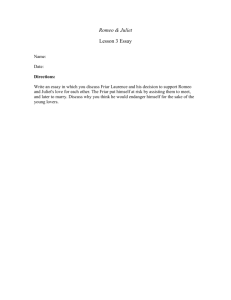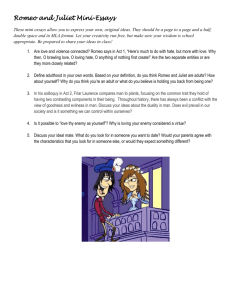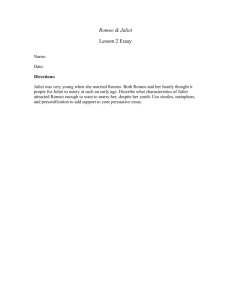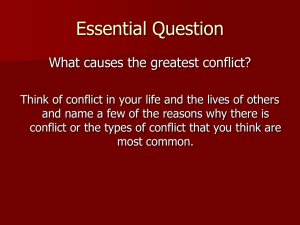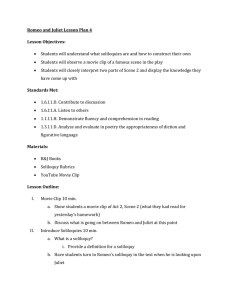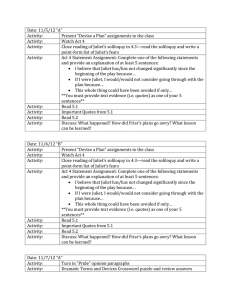9th Grade English Academic Vocabulary
advertisement
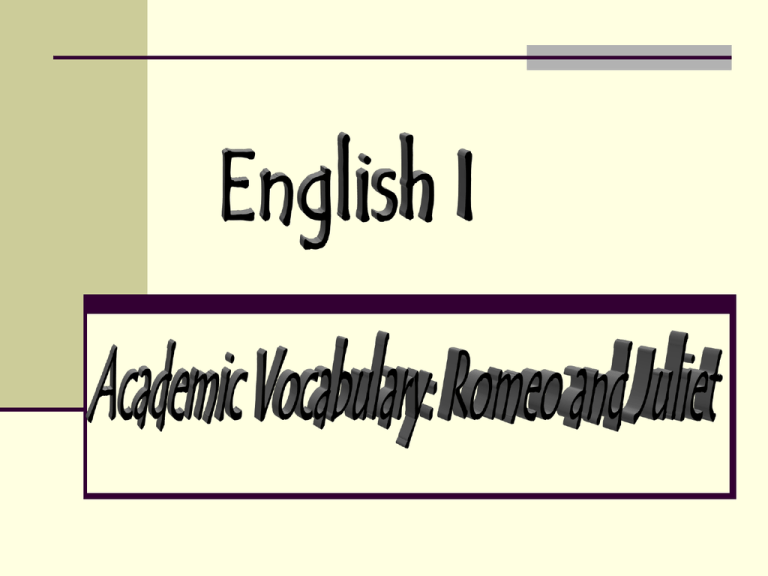
Alliteration The repetition of consonant sounds at the beginning of words. Example: Marilyn Monroe was a model and a movie star. Simile Figure of speech that makes a comparison between two things that are otherwise not alike, using the words like or as Example: 1. Playing chess with Ashley is like trying to outsmart a computer. The activity “playing chess with Ashley” is being compared to “trying to outsmart a computer.” The point is that Ashley can think in a powerful manner that resembles the way a computer operates, not that she is like a computer in any other way. 2. His temper was as explosive as a volcano. His temper is being compared to a volcano in that it can be sudden and violent. Metaphor A figure of speech that • • makes comparison between two things that are basically unlike but have something in common. Similar to simile but does not use like or as Figurative language Sandra Cisneros’s “My Name” Esperanza, the narrator, describes her name. “It means sadness, it means waiting,” she says. “It is like the number nine. A muddy color.” She also says it is like the records that her father plays, “songs like sobbing.” Personification Human qualities are attributed (given) to an object, animal or idea. Example The gray-eyed morn smiles on the frowning night. Pun A pun is a play on words that sound alike but have different meanings to produce a humorous effect. Examples: He bought a donkey because he thought he might get a kick out of it. Romeo: “You have dancing shoes with nimble soles; I have a soul of lead” (Romeo and Juliet) Foil A character whose personality and attitude contrast with those of another character Highlights both character’s traits Example: an extremely shy character might foil a very talkative one. Aside Dramatic device in which a character speaks his or her thoughts aloud, in words meant to be heard by the audience but not by the other characters. Example: Act 4: Scene 1 Romeo and Juliet Friar Laurence [Aside] “I would I know not why it should be slowed. – Look, sir, here comes the lady towards my cell.” ~ William Shakespeare, from Romeo and Juliet Soliloquy A speech in which a character speaks thoughts aloud Generally, character is on stage alone, not speaking to other characters Example: Act Two, Scene 3 Romeo and Juliet, Friar Laurence has a long soliloquy Stage Direction an instruction written into the script of a play indicating stage actions. Part of the script of a play that tells the actors how they are to move or to speak their lines. Example: Enter, exit, and exeunt are stage directions. Tragedy A dramatic work that presents the downfall of a dignified character or characters who are involved in historically or socially significant events Kind of play in which events turn out disastrously for the main character or characters Most often, the hero or heroine dies Events are set in motion by a decision that is often an error in judgment Succeeding events are linked in a cause-and-effect relationship and lead inevitably to a disastrous conclusion, usually death Dramatic Irony When the audience knows something that the characters do not Helps build suspense Example: The audience is aware of Romeo and Juliet’s tragic demise long before the characters face it. Comic Relief A humorous scene or speech intended to lighten the mood Serves to heighten the seriousness of the main action by contrast Comic relief often takes the form of a bumbling, wisecracking sidekick. Examples: “Donkey” in Shrek Jack Sparrow in Pirates of the Carribean The End
